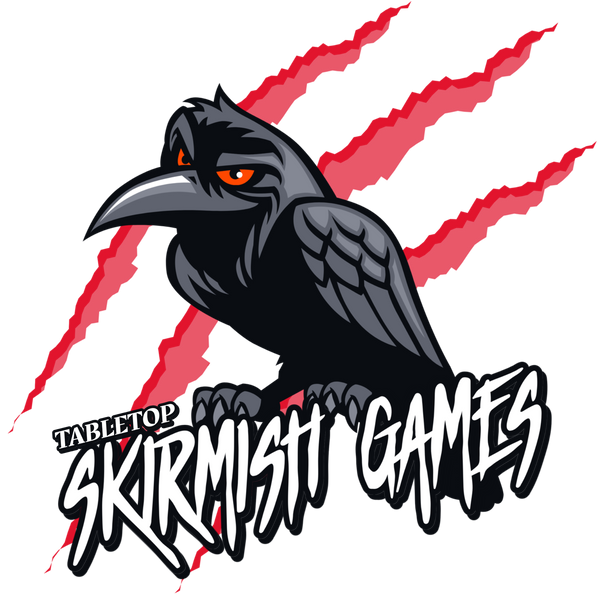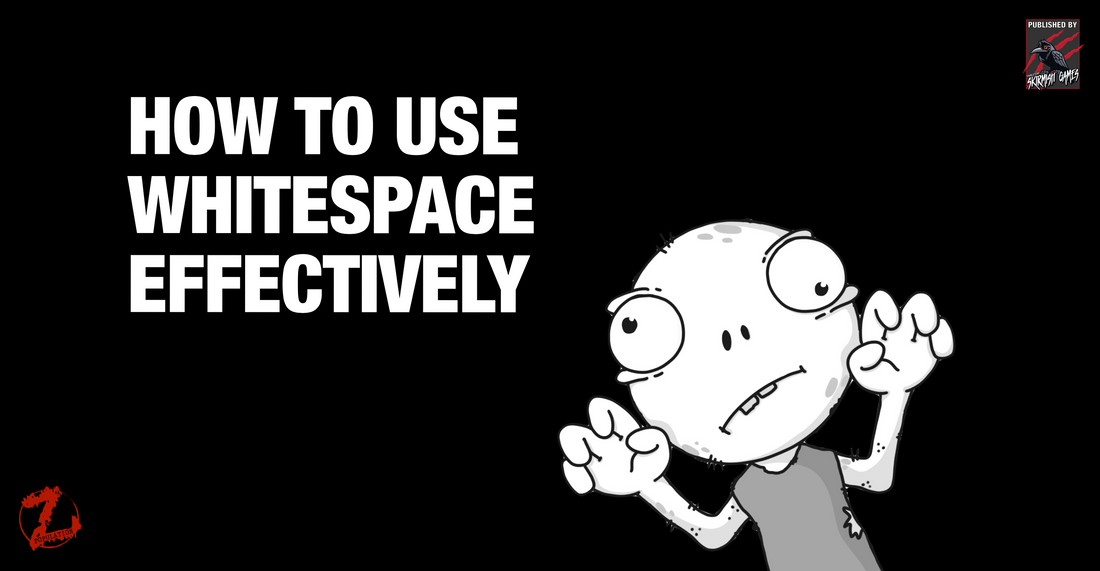How To Use Whitespace in Tabletop Skirmish Game Rulebook Design
When we consider that every rule and detail shapes the player's experience, the design of your rulebook is paramount. Whitespace, often referred to as negative space, is a subtle yet powerful design element that can significantly influence the readability, clarity, and overall aesthetics of your rulebook.
Whitespace may seem like an odd topic to focus on in tabletop skirmish game design, especially this early on in the series, but it can have a significant impact on the success of your game.
In this blog post, we'll explore 12 practical tips on harnessing the potential of whitespace so you can create a rulebook that educates and captivates your players.
1. Balance and Consistency
Maintaining a balance between content and whitespace is the first step in creating an inviting rulebook. Strive for a design that is clean and uncluttered, allowing the reader's focus to flow seamlessly between rules and explanations. Consistency in the amount of whitespace throughout the rulebook creates a sense of harmony and organisation, contributing to an enjoyable reading experience.
One book that stands out is the Victory at Sea rulebook by Warlord Games. The use of whitespace, headings, diagrams, and text all come together to make a clean layout that is pleasant to read. Here's a video I made on it if you'd like a closer look:
2. Margins
The margins of your rulebook play a pivotal role in the overall visual appeal. Ample margins provide breathing room for the text, preventing a cramped appearance. Consider using wider margins strategically for important sections or headings; this draws attention and guides the reader through key information.
If you will be selling your book as a printed hardback or paperback, consider the bleed and account for it when you first set up your page guidelines.
3. Line Spacing
Adjusting line spacing, also known as leading, is a nuanced way to enhance readability. A slight increase in line spacing prevents the text from feeling cramped, making it more legible and inviting. Experiment with different line spacing options to strike the perfect balance between readability and conserving space. Here's an example of line spacing to show how effective it is:

4. Paragraph Spacing
We touched on visual hierarchy in the previous blog post when we discussed headings, subheadings, and fonts. To establish a visual hierarchy in your book, consider slightly increasing paragraph spacing before and after headings, creating a structured flow that aids comprehension. Consistent paragraph spacing serves as a visual guide, separating blocks of text and making the rulebook more approachable.
5. Grid Layout
Organising content using a grid layout is a design strategy that ensures elements align correctly, contributing to a structured and professional appearance. The use of grids helps establish a consistent rhythm throughout the rulebook, creating a visually cohesive and organised document.
Creating a set of page templates is a great way to visualise the finished book layout. You can include margins, bleed, text blocks, and image spaces. Here's an example of a set of page templates I created for a previous book:

6. Group Related Information
Whitespace becomes a storytelling tool when used to visually group related information. By creating extra space between different sections or rules, you signal transitions, making it easier for players to navigate and locate specific details.
Try to keep all the information about a topic on one or two facing pages. It's not always possible, but it is beneficial to the reader if you can achieve that in the majority of your rulebook.
7. Use of Columns
Consider implementing a multi-column layout for a sophisticated and efficient organisation of complex information. This multi-column layout not only maximises space but also allows readers to navigate through content more efficiently, enhancing the overall usability of the rulebook.
Many rule books are A4 in size and have a lot of information on a single page. Using columns helps us navigate this information comfortably. Much like a magazine will use columns to keep the flow of an article, we can do the same in our tabletop skirmish games.
8. Avoid Clutter
Resist the urge to overcrowd pages with excessive information or decorative images. A clutter-free layout ensures that players can easily find key information, preventing feelings of being overwhelmed during gameplay.
When creating a tabletop skirmish game, we include background, narrative, lore, and a ruleset designed to teach new concepts. That's a lot of information to put across to a new player, and it's our job to make absorbing that information an enjoyable experience.
9. Highlight Key Elements
Strategic use of whitespace can emphasise critical elements such as essential rules, headings, or visual aids. By creating space around crucial information, you draw attention to it, guiding players through the most critical aspects of your game.
For example, placing a diagram on a single page with plenty of negative space around it shows the reader that this is something they need to pay attention to. It helps them focus on the information as there aren't any distractions on the page.
10. Consistent Font Sizes
Maintain a cohesive and polished look by using consistent font sizes throughout the rulebook. Variations can be used to emphasise certain elements, such as headings, but ensure that these variations are purposeful and contribute to the overall design harmony. We covered this in detail in the previous blog post here.
11. Background Image & Colour
Ensure your text and images pop off the page by using suitable background images. A white background is clean and crisp, but we can use background colours and abstract images throughout our books to create a mood or vibe.
It's easy to get this wrong or use a background image that has too much detail, therefore obscuring the text, and we saw this in the older edition of Necromunda. The background images were detailed and dark, and while the text was visible and readable, it wasn't welcoming or enjoyable.
12. Test for Readability
The ultimate measure of your rulebook's effectiveness lies in its readability. Before you start writing your book:
- Think about different layouts and designs and make some mock-ups, as you saw in my example earlier in the blog post.
- Share these with friends, family, and other players from your groups.
- Get as much feedback as you can and use that to guide your decision-making.
Ultimately, you are the writer and designer, so it is up to you to use your eye to decide on the final design, but feedback is incredibly helpful early on in the process.
You can also include 'usability testing' in your play-testing schedule to ensure that the chosen whitespace and layout contribute to a seamless reading experience. Gather feedback from potential users to identify areas for improvement and refine your rulebook accordingly.
How To Use Whitespace in Tabletop Skirmish Game Rulebook Design
By thoughtfully incorporating whitespace into your tabletop skirmish game design, you have the power to create a visually pleasing and user-friendly rulebook that enhances the gaming experience for your players.
The artful use of negative space facilitates understanding and helps capture the essence of your game. Focus on clarity, visual appeal, and player experience, and you'll soon be on the road to creating a successful tabletop skirmish game.
I’d love to hear your thoughts and opinions on the subject, so join in the conversation in the comments below.
Thanks for reading!
Lee
Look out for my new game, Population Z: Welcome to Huntsville, launching in January 2024.

